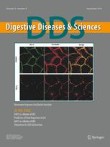Abstract
Introduction
With technique improvements, indications for laparoscopic and endoscopic cooperative surgery (LECS) for gastric subepithelial tumor (SET) are gradually expanding for tumors technically difficult to resect. However, surgical outcomes of LECS, including for esophagogastric junction (EGJ) tumors requiring advanced skills, remain unknown.
Methods
We reviewed patients in whom LECS had initially been attempted for gastric SET at the Cancer Institute Hospital in Tokyo from June 2006 to May 2018. Indications for LECS at the EGJ have gradually expanded during the study period to include tumors with esophageal invasion up to 2 cm, or less than half the EJG circumference, preoperatively. Surgical outcomes and risk factors for conversion to other procedures were investigated.
Results
Twenty (9.3%) of the 214 total patients had EGJ tumors. Four patients (20%) with EGJ tumors developed postoperative complications (Clavien‐Dindo grade ≥ II). Among 12 patients in whom LECS could be completed for EGJ tumors, only one non‐serious complication occurred. Eight patients required conversion to another operation for EGJ tumors (two laparotomy, six proximal gastrectomy). Among conversion cases with EGJ tumors, anastomotic leakage occurred in both patients undergoing laparotomy after LECS, necessitating additional defect closure. There was only one non‐serious complication in six proximal gastrectomy patients. On multivariate analysis, EGJ tumor was an independent risk factor for conversion to another operation.
Conclusion
LECS at the EGJ may be a risk factor for conversion operation, and when performing LECS at the EGJ is difficult, conversion to proximal gastrectomy, which can be performed safely, should be considered.



